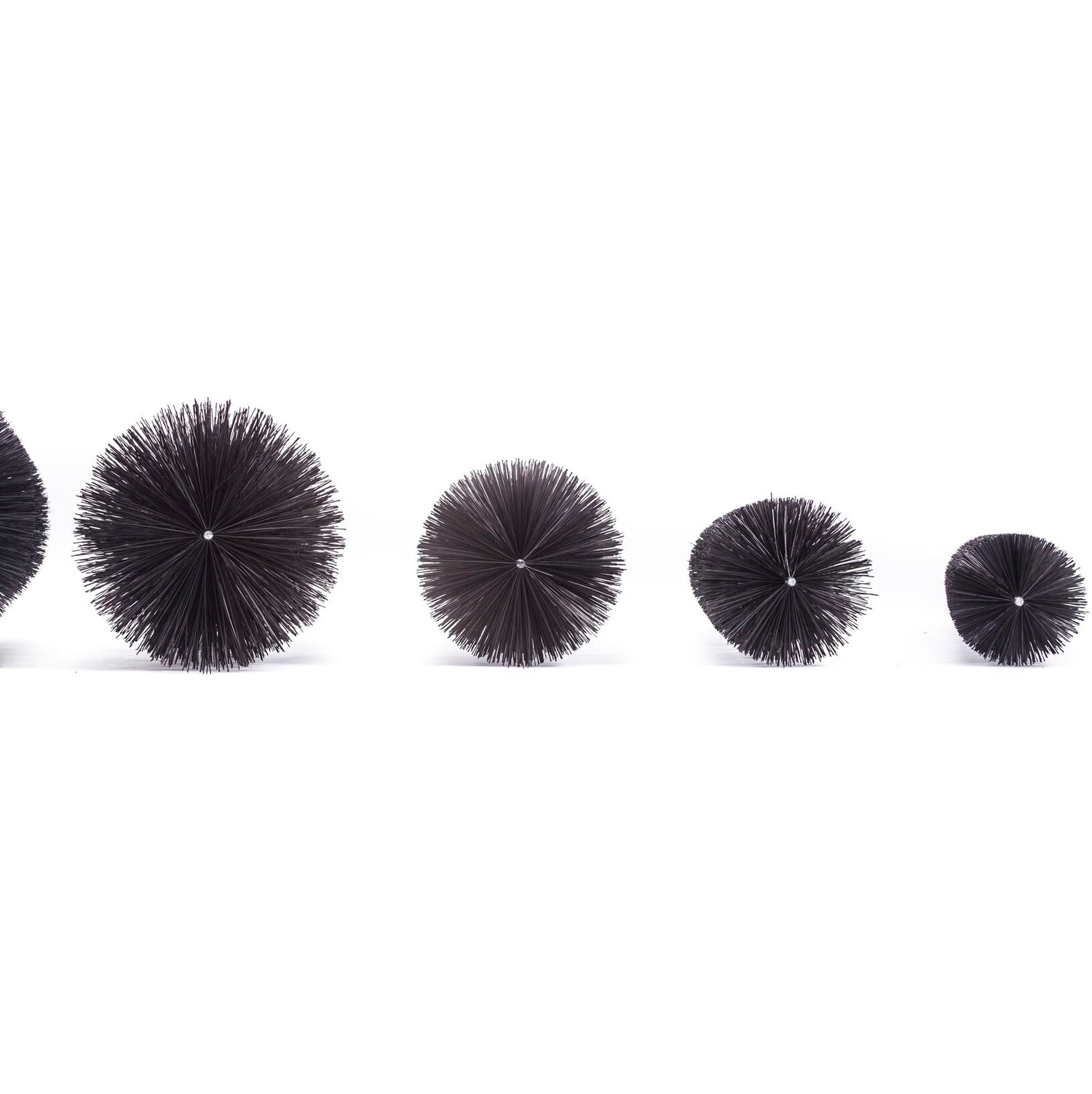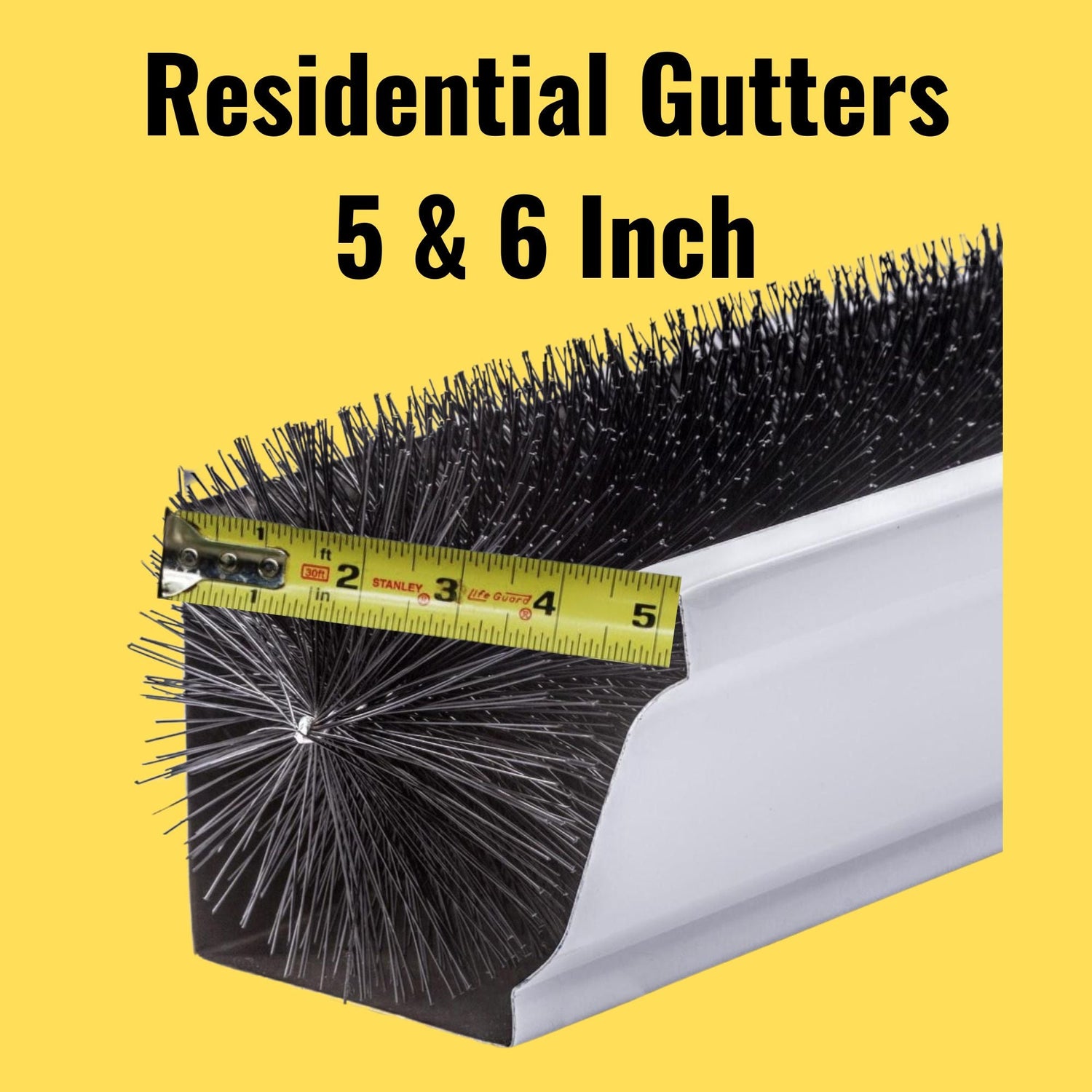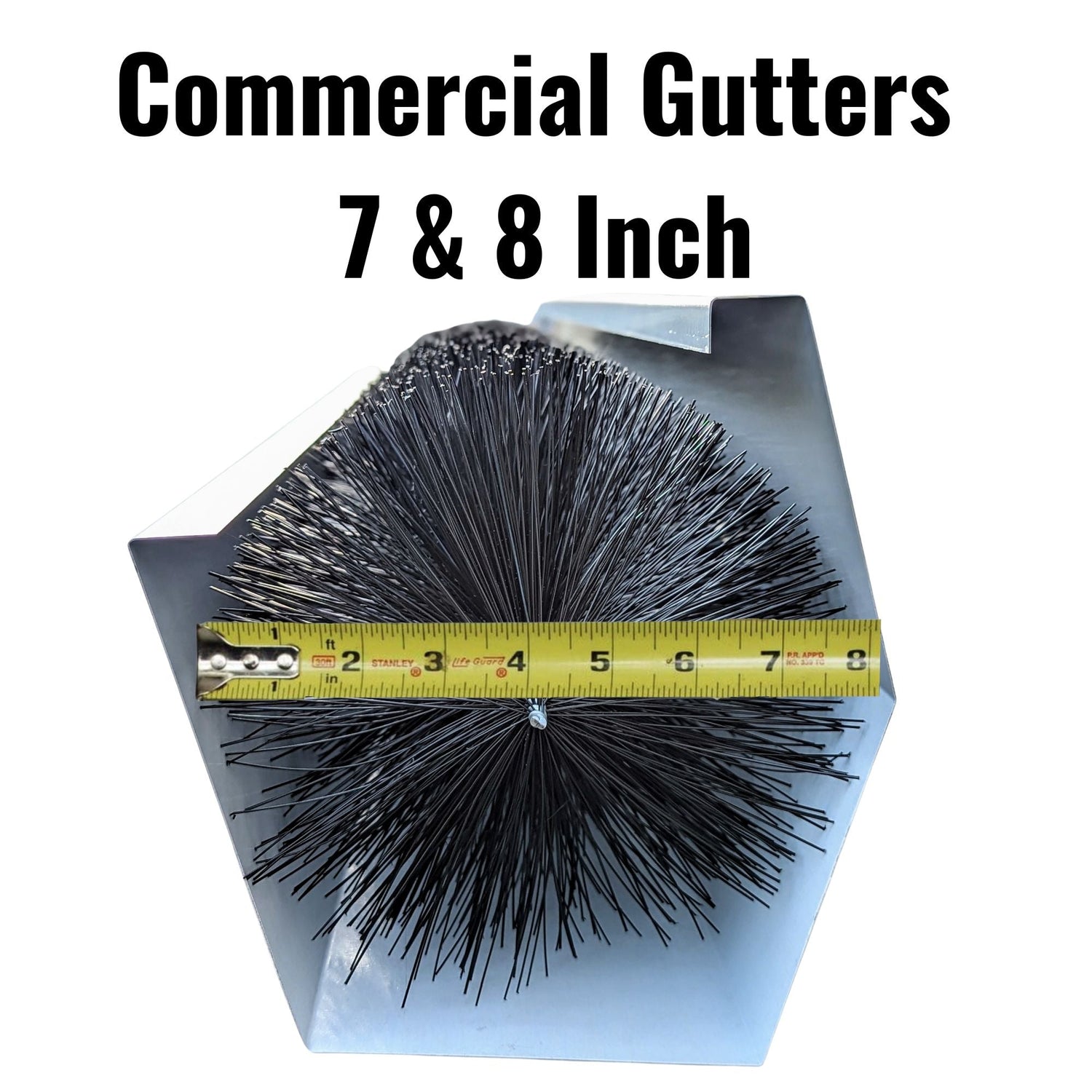Avoid Expensive Clogs In Ground Gutter Drainage
Underground Gutter Drainage
One of the most attractive and beneficial ways to transport rainwater off your property is with underground gutter drainage. But those benefits can be outweighed by underground gutter drainage system problems, if the buried drainage pipe system is not properly installed and maintained. The key is to keep your in-ground drainage going strong while also keeping the gutters and downspouts flowing; hopefully with minimal gutter cleaning and gutter maintenance.

From downspouts, water no longer needs to flow across the top of your landscaping or accumulate against your foundation . Storm water flowing over your lawn, soil or flowerbeds can be messy, muddy and can cause erosion. Rerouting rain water where it can pose no harm is made simple by the installation of underground gutter drainage and french drains, but there is maintenance involved.
In colder climates, over-the-soil drainage can cause additional problems. One of the biggest involves the flow of rainwater across a walkway or driveway, which can freeze into a sheet of ice. The risk of a slip-and-fall accident from walkway or driveway ice, can be enough to motivate a homeowner to pursue a project installing the new underground drain from gutter.
People often do come up with creative and unique solutions to carry storm water away from the downspouts and the foundation. An underground drainage solution can also be referred to as a runnel. Sounding like a tunnel, a runnel can be any type of pipe or channel that carries water underground.
When you see a home's downspouts (also known as leader pipes) entering the ground, the underground gutter drainage system is typically constructed one of two ways:
- With slightly sloped in-ground gutter drainage pipes that allow the water to flow downhill, exiting on top of the ground somewhere further away; draining the gutters away from the house or building.
- With underground gutter drainage pipes that empty into a large, underground storm drainage pit, hopefully large enough to hold the rain water. These pits are usually initially filled with drainage stone so the collected rain water can fill the air space in between the stones.
Although both of the above scenarios can work like clockwork when they're new and unclogged, years of gutter downspout drainage can end up carrying debris through the system. With debris clogging up the underground drain from the gutter, ground drainage pipes become congested and rain water is no longer able to enter and flow through at the necessary rate.
Problems with Buried Downspouts

Many homes have gutters and downspouts that are unprotected. These unprotected gutters let tree and wind blown debris of all sizes enter the gutter, where the rain water causes it to flow down the buried downspouts and into the underground gutter drainage.
There is a very easy method that anyone can perform to keep gutter debris from clogging the downspout and buried drainage pipes as well as keep the gutter from overflowing. Click here to see the easiest way to keep gutters from clogging.
While the underground drain from gutter might allow a certain amount of debris to enter and continue to flow, allowing such debris into the underground gutter drainage system will eventually cause the system to reach full capacity and eventually clog. Clearing such in-ground drainage clogs can be very expensive-and in some cases, impossible. Watch your underground drainage during the heaviest of rain storms, if it begins backing up during heavy rains, the rate of water flow may be affected; it may not be clogged, but the flow may be slowing due to a buildup of debris.
An underground drainage pit filled with drainage stone may receive just enough debris that the rate of rain water flowing down the buried downspout will exceed the rate of water that the underground drainage pit is capable of accepting, causing back pressure and overflow. For this reason, it is a good idea to have a loose or wide-open fitting between the bottom of the gutter downspout and the opening of the in-ground drainage pipe. This open or loose joint pipe connection allows storm water to overflow at the loose fitting down near the ground, when the underground drainage system can no longer accept 100% of the water.

Such a loose downspout attachment to the buried rainwater drainage pipe keeps the water from backing up the downspout all the way up to the gutter where it would spray and be a nuisance. Water will always take the path of least resistance, so it makes sense for that path to allow gutter drainage outflow down near the ground rather than up at the fascia and soffit of the roof where it can cause water damage, bugs and rotted wood.
While a home's guttering may be getting away with allowing gutter debris to enter the underground gutter drainage pipe or underground pit for now, eventually the system will reach its capacity. The solution that makes the most logical and financial sense is to stop the debris from entering the buried gutter drainage system in the first place; while also stopping the gutters from clogging. It is easier said than done, but Gutterbrush has a simple easy solution that works. Click to see the solution to keep underground drainage pipes clear and gutters flowing.
Rain barrel technology uses leader pipe screens and gutter filters to keep the debris from entering the rain barrel, but they require high levels of attention and maintenance cleaning. The screens and filters need to constantly and consistently be cleaned and maintained or the system will clog quickly blocking the flow and losing the rain water capture opportunity. All filters require maintenance and the tighter the filter, the more maintenance it will require.
Ground Guttering, Fixing a Problem Causes Gutter Overflow
Early in my career, I had a customer complain that none of her underground drainage pipes were flowing. We were able to clear the pipes with a Roto-Rooter type of device, which was both expensive and time consuming. Of course, the customer immediately asked: "How do I keep these underground storm drainage pipes from clogging again?"
Our solution at the time, was to place a small wire basket downspout strainer, which is in the shape of a light bulb, into each gutter outlet tube over every downspout that enters the ground.

These wire strainers worked well to keep the tree debris and maple helicopter seeds from entering the underground downspout drainage, but they also caused her gutters to overflow every two to three weeks. Here's a link to a video called " The problem with wire gutter strainers".
In short, we had solved one underground drainage pipe problem but we had created a gutter maintenance nightmare because the wire downspout strainers had only a small amount of surface area to trap the gutter debris. Simply put, the wire strainers were too small. Within a very short amount of time, leaves and tree seeds would pile up surrounding the gutter wire strainer. It only took a handful or two of gutter debris to completely stop the rain water flow and cause the rainwater to pour over the side of the gutter.
I remember back then wishing that there were a full-length gutter strainer on the market. The underground drainage pipe calls for a solution with a much larger amount of surface area in order to perform for long periods of time with no gutter maintenance necessary. A larger strainer or even a full length gutter strainer will accept and stop more tree dropping debris while continuing to allow the gutter to flow freely. This would result in less maintenance and fewer headaches to keep the entire system functioning. I needed a full length gutter strainer to keep the underground gutter drainage from clogging and also to keep the gutter itself from clogging at the outlet tube. My prayers were eventually answered finding Gutterbrush to solve this ever so common home maintenance problem.
Click the below picture to see all 6 GutterBrush brush gutter guard sizes to keep drainage clear.
Underground Downspout Drainage Solutions
Fast forward several years, and such a wonderful gutter and drainage solution exists. The GutterBrush Leaf Guard acts as a full-length gutter strainer. Not only does it keep debris out of the underground downspout drainage, but it also keeps the gutter itself from clogging. It's incredibly easy to install and easy to maintain. Anyone can install this leaf guard, you just fill your entire gutter with three foot lengths of GutterBrush. This product is easy to install and it will keep your buried drain pipes from clogging. We have even heard of customers installing Gutterbrush right into their " runnel " drainage.
Gutter Guards, Gutter Covers and Screens, Limitations

Gutter covers, screens and other gutter helmet type gutter protection products do exist, but they do not all operate in a manner that will keep debris from entering your underground downspout drainage system. The helmet-type devices, also known as gutter covers, have a slot at the outermost edge, which is supposed to allow roof water into the gutter while also keeping out debris.
Here's a video about stopping buried pipe clogging from leaves and gutter debris.
These devices have several issues that prevent them from being ideal underground drainage solutions. When it rains heavily, the gutter cover can cause the fast rain water to flow right past the gutter helmet slot and overflow. Such fast-moving rain water often never even gets a chance to enter the gutter.
Here's a video showing how gutter screens cause water to miss the gutter.
Additionally, while the rainwater slot is thin, it is also long. That means long, thin debris like twigs, leaves, pine needles, maple seeds and other thin leafs can merrily flow with the rain water right into the gutter helmet slot. The last time I checked, most leafs are thin and will fit and flow into the gutter slot. Only fatter, larger debris is blocked from entering the downspouts and storm drains; so even with these gutter guards installed, debris can still flow into the gutter, flow down the gutter channel down the downspout and cause problems with buried downspouts.
When gutter covers and screens require maintenance, there is the added difficulty of requiring tools, skill and fasteners to disassemble and reinstall for gutter cleaning and gutter guard cleaning. All gutter guards will require maintenance eventually.
The gutter screens that have large openings to accept more rain water, continue to also accept debris. Any thin debris in a lengthwise position can still fit through the gutter screen apertures. This means lengthwise and small debris will continue to enter your gutter and flow to the downspout and underground storm drains if you use a screen with large enough openings. You can click the below picture to see a video of GutterBrush at then top of the page.
If you install a gutter screen or gutter mesh with the smallest openings, then you have another collateral issue that arises and creates gutter work. While the gutter mesh or gutter microscreen openings are small enough to keep your gutters and underground drainage and storm drains clear, they are also so small that they clog up or get covered in no time. Like the gutter covers, gutter mesh is also known to cause the fast water in heavy rains to over flow past the gutter.
When leaves drop and lay on top of the gutter screens and gutter mesh, they create a flat mat of sticky wet debris which also adds to the problem. This layer of tree debris and wet leaves out in the rain "mats down" and stops the water from entering the gutter, causing it to bypass the gutters altogether. The rain water hits the flat mat of debris laying on the screen as if it were a ramp, and the water cascades past the gutter.
In order to avoid the high cost of having to clean out your underground gutter drainage system, some sort of effective strainer or gutter filter is required. There needs to be some sort of balance or engineering between stopping the gutter and drainage system from clogging but also allowing fast high volume rain water to enter the gutter properly. A degree of maintenance will also be required to keep the buried drainage clear and the gutters, downspouts and drainage flowing.
Small strainer devices can be used solely over the gutter outlets and downspouts, but those small-surface-area devices require much too frequent gutter cleaning because they do not have enough surface area to accept a volume of debris while also continuing to flow. While they'll keep debris out of the downspout,without frequent trips up the ladder, they will also clog frequently and result in gutter overflow.
Underground Gutter Drainage, Pipe Clog Solutions
The greater the surface area of the gutter downspout strainer, the less maintenance that will be required to keep the gutter flowing. A full-length gutter strainer, like the GutterBrush Leaf Guard, covers the entire gutter area. This gutter protection device keeps debris out of your gutter which, in turn, keeps debris out of your downspout and underground drainage system. All this while decreasing the amount of maintenance required to keep the entire system flowing. GutterBrush fills the entire gutter so you couldn't possibly find a larger gutter strainer; even better is the fact that GutterBrush's raised bristle profile extends a little above the edge of the gutter for even more surface area and wind purge height.
To figure out which of the six GutterBrush sizes you would need for your gutter size, click for how to measure for brush gutter guards.
Available in six different diameters or widths to suit a range of different gutter sizes, the GutterBrush Leaf Guard is also easy to install with just two simple steps:
- Clean out your gutters: Remove all existing gunk, leaves and debris. Also check your downspouts to make sure they're clear and flowing fully.
- Insert GutterBrush: Fill gutters end-to-end with GutterBrush, which is available in 36-inch and 18-inch lengths. Bend around corners and, if a piece is too long, simply fold the brush back into itself to make it fit. No need for tools, cutting or fasteners.
Find your size GutterBrush, to keep your " runnel" or underground drain pipes, and gutters from clogging. If you like reading about this subject, here's another article about keeping buried drainage pipes from clogging. You can also see GutterBrush products at the bottom of this page below.
Alex O'Hanley
25 Years in Roofing






